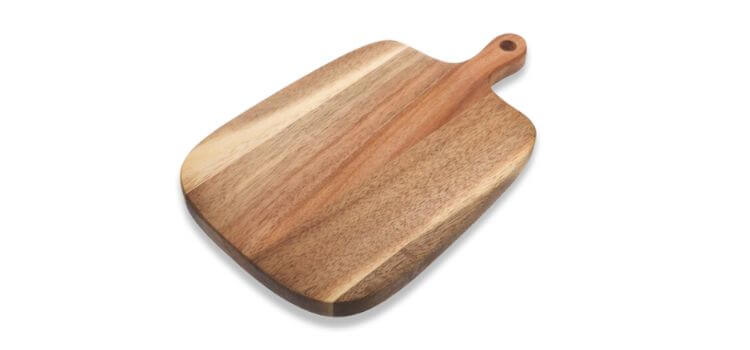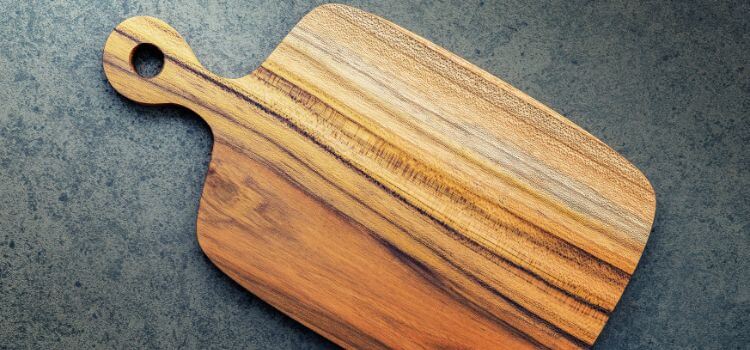As an Amazon Associate, I earn from qualifying purchases

Cutting boards are an indispensable tool in any kitchen, providing a safe surface for preparing food. They come in various materials, each offering distinct advantages and drawbacks. Among these, cedar wood emerges as an intriguing option. Known for its aromatic qualities and unique aesthetic, cedar presents itself as a potential favorite for those seeking something different in their kitchen.
This article explores whether cedar is a suitable choice for cutting boards by examining its properties, benefits, drawbacks, and comparisons with other wood types. Our goal is to guide you in making an informed decision that aligns with your culinary needs.
Properties of Cedar Wood
Cedar wood is renowned for its striking appearance and distinctive aroma. Typically, it has a warm, reddish-brown hue complemented by a straight, fine grain that can occasionally display knots and unique patterns. This visual appeal makes cedar a desirable choice for those who appreciate the aesthetic value of their kitchen tools.
The wood’s aromatic nature stems from its natural oils, which not only impart a pleasant fragrance but also offer some protective qualities against pests and decay. These oils are part of what makes cedar unique and appealing, particularly for those who enjoy the sensory experience of working in the kitchen.
Cedar is a relatively soft wood, making it extremely workable and easy to shape into various forms. Its lightness enhances its maneuverability, allowing for easy handling and storage. However, this softness also means it might not endure the same level of wear and tear as harder woods, a point we’ll explore more deeply in the sections that follow.
Benefits of Cedar for Cutting Boards
- Natural Antibacterial Properties: Cedar contains oils that resist bacterial growth, making it a hygienic choice for kitchen use, especially when handling raw meats and ingredients prone to contamination.
- Aesthetic Appeal: The unique color and grain patterns of cedar add rustic charm to any kitchen. Whether on display or used as a serving board, cedar cutting boards often become conversation pieces.
- Lightweight and Portable: Cedar’s lightweight nature makes it easy to move around the kitchen or transport for outdoor dining and picnics. This is particularly beneficial for conserving energy or for those with limited storage space, as cedar boards are easier to handle than heavier alternatives.
Drawbacks of Cedar for Cutting Boards
- Susceptibility to Scratches and Gouges: Cedar’s softness makes it easy to work with, but this also means it is more prone to damage from knives. Over time, frequent use can result in a worn appearance and compromise the board’s surface integrity.
- Durability Concerns: Compared to harder woods like maple or oak, cedar cutting boards may not hold up as well under prolonged, heavy use. They tend to wear down faster, especially in busy kitchen environments where they face frequent cutting and chopping.
- Risk of Splintering: The softer texture of cedar increases the risk of splintering, which can affect the board’s functionality. This presents a safety concern if wood fibers inadvertently end up in food, potentially leading to health hazards.
- Maintenance Requirements: While regular maintenance can help address some of these issues, it requires extra effort and attention. This is an important consideration when choosing cedar as a cutting board material.
Comparisons with Other Types of Wood

- Maple: Maple is often the go-to choice for cutting boards due to its hardness and durability, ranking higher on the Janka hardness scale than cedar. This makes it more resistant to scratches and dents, though it can be harsher on knife edges. Maple boards are typically less aromatic and not as visually striking as cedar, but they offer long-lasting performance and are generally more affordable.
- Bamboo: Bamboo is celebrated for its sustainability and environmental benefits, as it grows quickly and is highly renewable. It’s harder than cedar, offering greater durability, but can be tough on knives. Bamboo boards lack the unique aroma and aesthetic of cedar but are a cost-effective and eco-friendly alternative.
- Walnut: Walnut is a middle ground between cedar and maple in terms of hardness and durability. It offers a rich, dark appearance and is easier on knives than maple. Like cedar, walnut has a beautiful aesthetic but is typically more expensive. It requires similar maintenance to cedar, making it a close competitor in terms of both form and function.
Care and Maintenance Tips
To maintain the beauty and functionality of a cedar cutting board, proper care is essential. Here are some tips to help extend its lifespan:
- Cleaning: After each use, wash the board with mild soap and warm water. Avoid soaking it, as prolonged exposure to water can cause warping. Instead, dry it thoroughly with a towel immediately after washing.
- Oiling: Regular oiling is crucial for cedar boards to prevent drying and cracking. Use food-grade mineral oil or beeswax, applying it monthly or whenever the board appears dry. This not only preserves the wood’s integrity but also enhances its antibacterial properties.
- Storage: Store the board in a dry, well-ventilated area. Avoid placing it near heat sources or in direct sunlight, as extreme temperatures can cause warping. If possible, store the board upright to allow for even air circulation on all sides.
Conclusion
Cedar cutting boards offer a unique combination of aesthetic appeal, natural antibacterial properties, and lightweight handling. While they may not match the durability of harder woods like maple or walnut, they can still be an excellent choice for those who prioritize beauty and ease of use.
The decision ultimately depends on your personal preferences, kitchen needs, and how you balance aesthetics with functionality. With proper care, a cedar cutting board can serve as both a practical tool and a charming addition to your culinary space.
FAQ
Is it safe to use cedar as a cutting board?
Cedar can be used as a cutting board, but it’s softer than ideal, making it prone to scratches and potential splintering. While it has natural antibacterial properties, regular maintenance is crucial to prevent damage. Ensure the cedar is untreated and food-safe to avoid chemical exposure.
What woods to avoid for cutting boards?
Avoid using softwoods like pine and cedar that easily scratch and harbor bacteria. Also, steer clear of exotic hardwoods treated with chemicals or containing natural toxins. These woods can compromise food safety and hygiene, making them unsuitable for cutting board use.
What is the best type of wood for cutting boards?
Maple is often considered the best wood for cutting boards due to its hardness, durability, and closed-grain structure, which resists bacteria. It’s gentle on knives and offers long-lasting performance. Walnut and cherry also make excellent choices, balancing durability with aesthetic appeal.
How do you seal a cedar cutting board?
To seal a cedar cutting board, apply food-grade mineral oil or beeswax regularly. Start with a clean, dry board, and apply the oil evenly using a cloth, allowing it to soak overnight before wiping off excess. Oiling helps preserve the wood’s integrity and prevents drying or cracking.
As an Amazon Associate, I earn from qualifying purchases